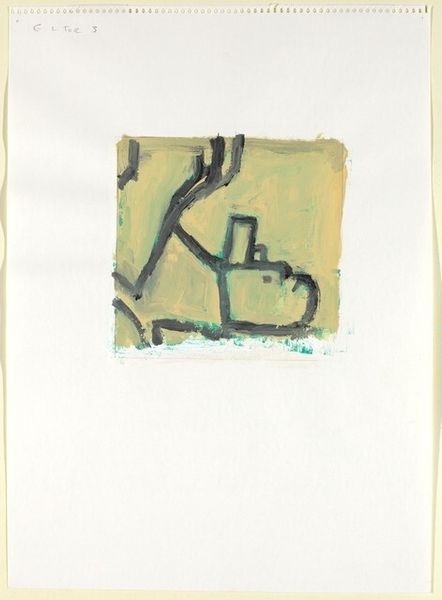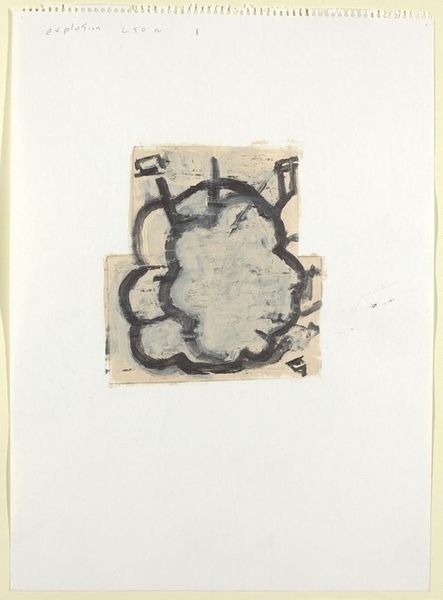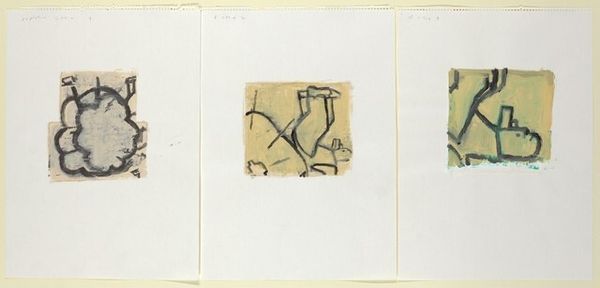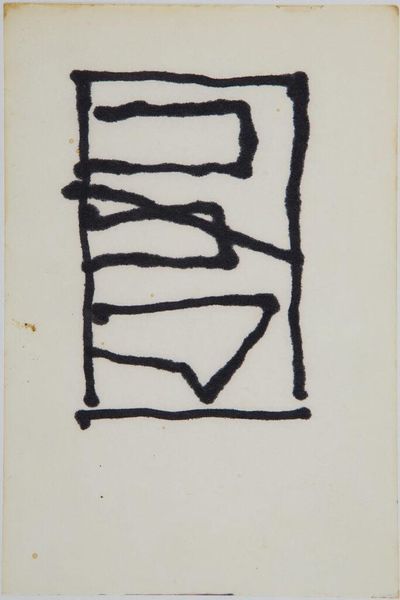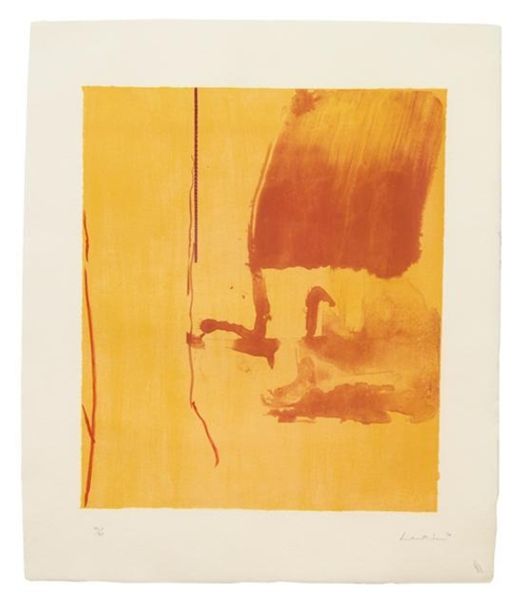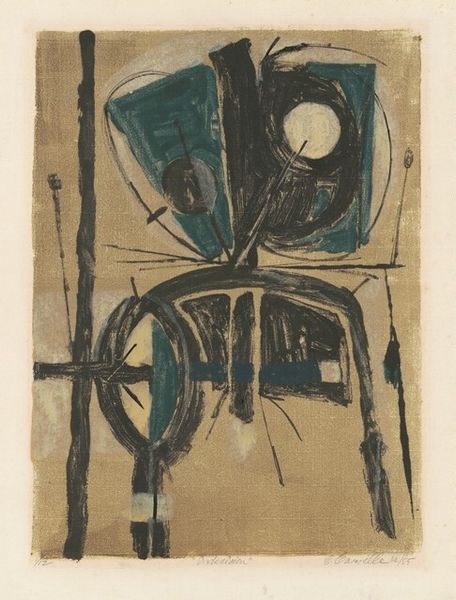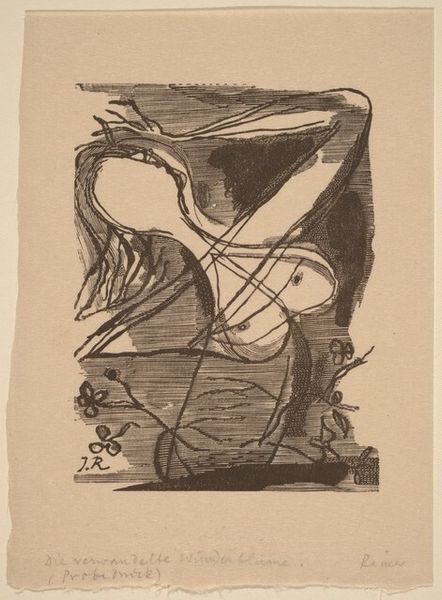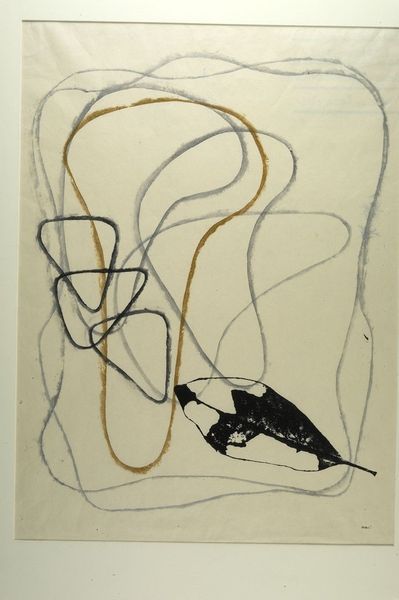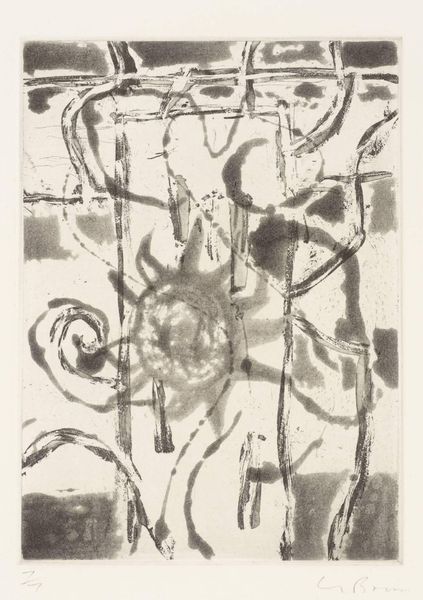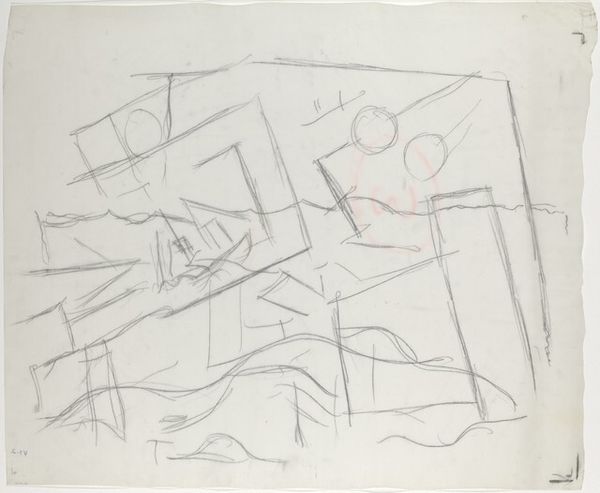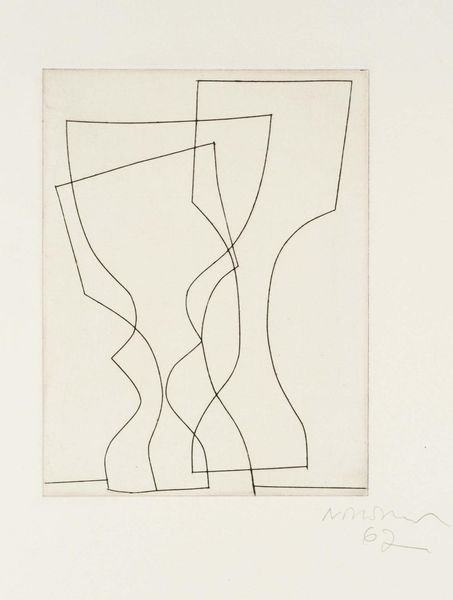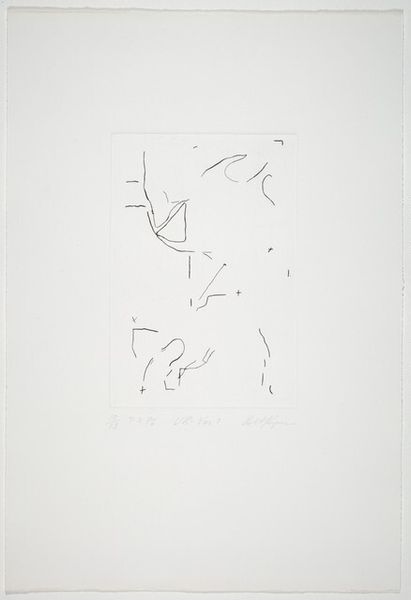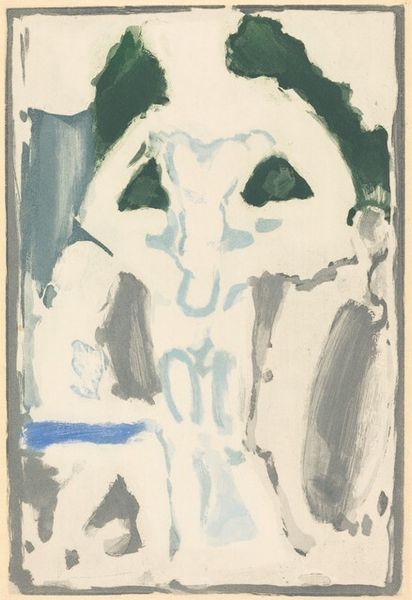
drawing, paper, ink
#
drawing
#
figuration
#
paper
#
ink
#
coloured pencil
#
abstraction
#
modernism
#
watercolor
Dimensions: image: 15 x 17.3 cm (5 7/8 x 6 13/16 in.) sheet: 44.5 x 32 cm (17 1/2 x 12 5/8 in.)
Copyright: National Gallery of Art: CC0 1.0
Editor: Here we have Eugene Brodsky's "Explosion (center)" from 1989, an ink, colored pencil and watercolor drawing on paper. It's quite an abstract piece; the stark black lines against the creamy beige background create a rather unsettling, almost chaotic feeling for me. What's your take? How do you interpret this work? Curator: It's interesting you mention chaos. I think we have to consider the socio-political climate in 1989. The Cold War was coming to an end, but there was still palpable tension and fear of nuclear conflict. Abstraction can be a powerful way to express those anxieties when direct representation feels inadequate or even dangerous. Does the title "Explosion" conjure up particular anxieties given the period of its creation? Editor: That's a great point about the historical context. I hadn’t directly associated the title with Cold War anxieties, but now that you mention it, the explosive imagery definitely resonates differently. It's less about literal depiction and more about the psychological impact of living under constant threat. Curator: Exactly. And the fact that Brodsky chose such raw materials like ink and paper—media historically deemed ‘lesser’—could be a subtle commentary on the perceived instability and fragility of the world order at the time. Do you think the artwork critiques existing structures and institutions? Editor: Perhaps. It feels like a departure from grand, heroic narratives that were once so common in art. By using such basic materials and focusing on an “explosion,” Brodsky might be suggesting a breakdown of those established narratives. It is very introspective. Curator: Precisely. The piece exists in this really interesting tension, speaking to universal anxieties of a nuclear holocaust and doing so with rudimentary material in a public forum such as this. Now that we considered that, what do you make of this art? Editor: Considering the social and political context, I see now how this piece powerfully communicates the fears and uncertainties of its time. Thank you for sharing that! Curator: And thank you. You have brought your own youthful experiences and observations and contributed well to the community’s understanding.
Comments
No comments
Be the first to comment and join the conversation on the ultimate creative platform.
